Mo Wang
Multi-objective optimization via evolutionary algorithm (MOVEA) for high-definition transcranial electrical stimulation of the human brain
Nov 10, 2022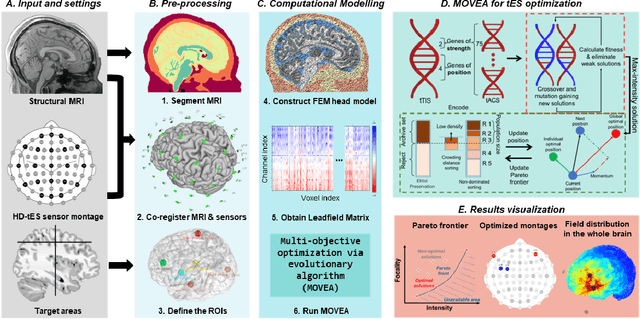
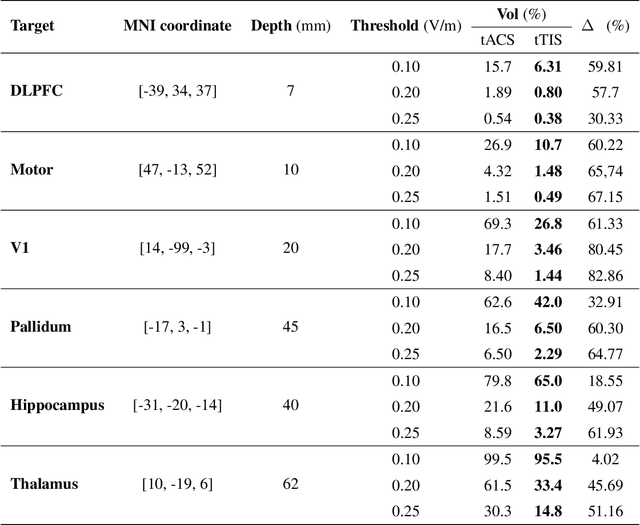
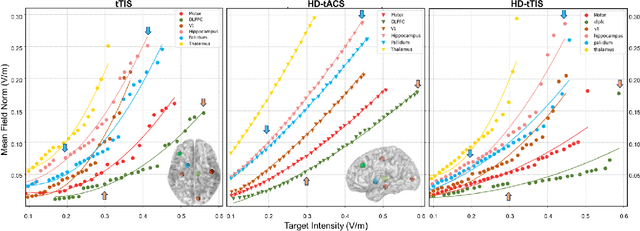
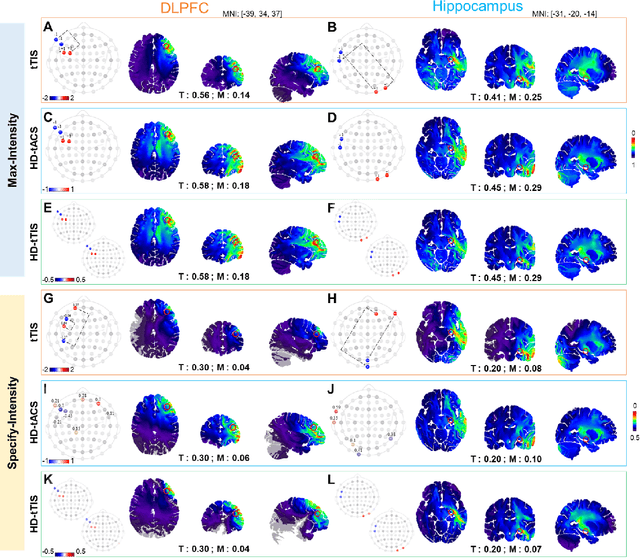
Abstract:Transcranial temporal interference stimulation (tTIS) has been reported to be effective in stimulating deep brain structures in experimental studies. However, a computational framework for optimizing the tTIS strategy and simulating the impact of tTIS on the brain is still lacking, as previous methods rely on predefined parameters and hardly adapt to additional constraints. Here, we propose a general framework, namely multi-objective optimization via evolutionary algorithm (MOVEA), to solve the nonconvex optimization problem for various stimulation techniques, including tTIS and transcranial alternating current stimulation (tACS). By optimizing the electrode montage in a two-stage structure, MOVEA can be compatible with additional constraints (e.g., the number of electrodes, additional avoidance regions), and MOVEA can accelerate to obtain the Pareto fronts. These Pareto fronts consist of a set of optimal solutions under different requirements, suggesting a trade-off relationship between conflicting objectives, such as intensity and focality. Based on MOVEA, we make comprehensive comparisons between tACS and tTIS in terms of intensity, focality and maneuverability for targets of different depths. Our results show that although the tTIS can only obtain a relatively low maximum achievable electric field strength, for example, the maximum intensity of motor area under tTIS is 0.42V /m, while 0.51V /m under tACS, it helps improve the focality by reducing 60% activated volume outside the target. We further perform ANOVA on the stimulation results of eight subjects with tACS and tTIS. Despite the individual differences in head models, our results suggest that tACS has a greater intensity and tTIS has a higher focality. These findings provide guidance on the choice between tACS and tTIS and indicate a great potential in tTIS-based personalized neuromodulation. Code will be released soon.
Explainable fMRI-based Brain Decoding via Spatial Temporal-pyramid Graph Convolutional Network
Oct 08, 2022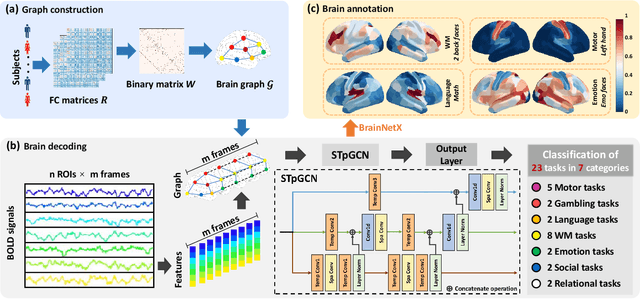
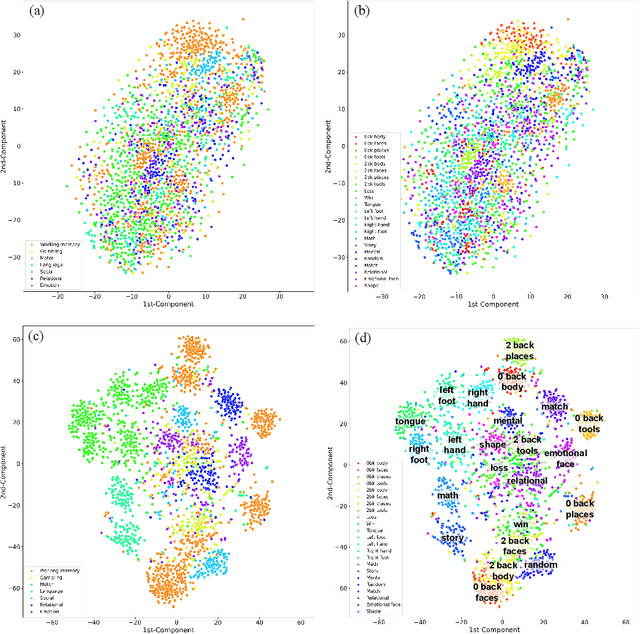
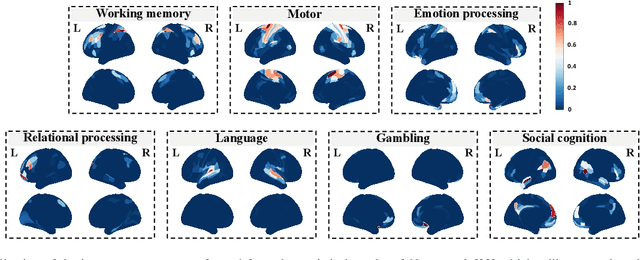
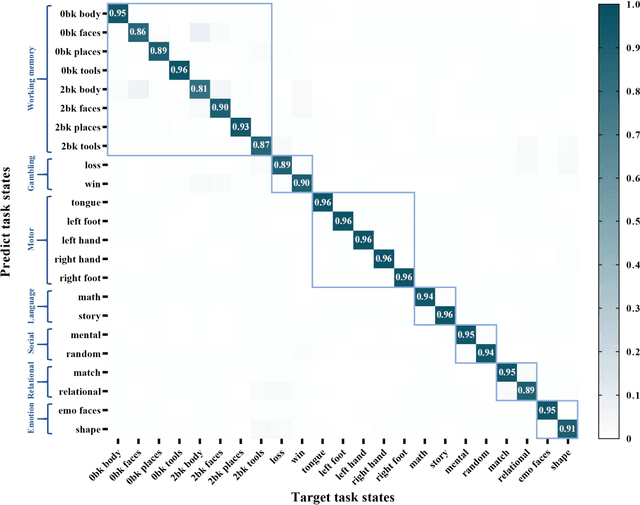
Abstract:Brain decoding, aiming to identify the brain states using neural activity, is important for cognitive neuroscience and neural engineering. However, existing machine learning methods for fMRI-based brain decoding either suffer from low classification performance or poor explainability. Here, we address this issue by proposing a biologically inspired architecture, Spatial Temporal-pyramid Graph Convolutional Network (STpGCN), to capture the spatial-temporal graph representation of functional brain activities. By designing multi-scale spatial-temporal pathways and bottom-up pathways that mimic the information process and temporal integration in the brain, STpGCN is capable of explicitly utilizing the multi-scale temporal dependency of brain activities via graph, thereby achieving high brain decoding performance. Additionally, we propose a sensitivity analysis method called BrainNetX to better explain the decoding results by automatically annotating task-related brain regions from the brain-network standpoint. We conduct extensive experiments on fMRI data under 23 cognitive tasks from Human Connectome Project (HCP) S1200. The results show that STpGCN significantly improves brain decoding performance compared to competing baseline models; BrainNetX successfully annotates task-relevant brain regions. Post hoc analysis based on these regions further validates that the hierarchical structure in STpGCN significantly contributes to the explainability, robustness and generalization of the model. Our methods not only provide insights into information representation in the brain under multiple cognitive tasks but also indicate a bright future for fMRI-based brain decoding.
Machine Teaching: A New Paradigm for Building Machine Learning Systems
Aug 11, 2017
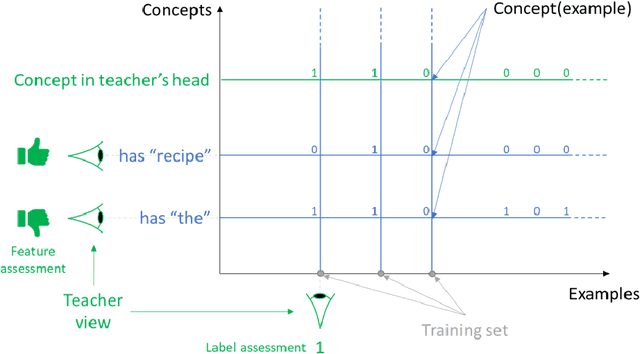

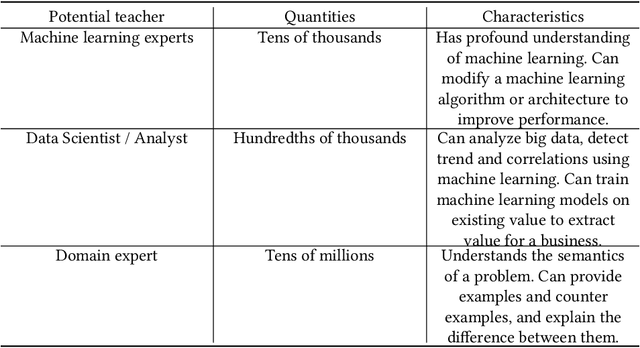
Abstract:The current processes for building machine learning systems require practitioners with deep knowledge of machine learning. This significantly limits the number of machine learning systems that can be created and has led to a mismatch between the demand for machine learning systems and the ability for organizations to build them. We believe that in order to meet this growing demand for machine learning systems we must significantly increase the number of individuals that can teach machines. We postulate that we can achieve this goal by making the process of teaching machines easy, fast and above all, universally accessible. While machine learning focuses on creating new algorithms and improving the accuracy of "learners", the machine teaching discipline focuses on the efficacy of the "teachers". Machine teaching as a discipline is a paradigm shift that follows and extends principles of software engineering and programming languages. We put a strong emphasis on the teacher and the teacher's interaction with data, as well as crucial components such as techniques and design principles of interaction and visualization. In this paper, we present our position regarding the discipline of machine teaching and articulate fundamental machine teaching principles. We also describe how, by decoupling knowledge about machine learning algorithms from the process of teaching, we can accelerate innovation and empower millions of new uses for machine learning models.
 Add to Chrome
Add to Chrome Add to Firefox
Add to Firefox Add to Edge
Add to Edge